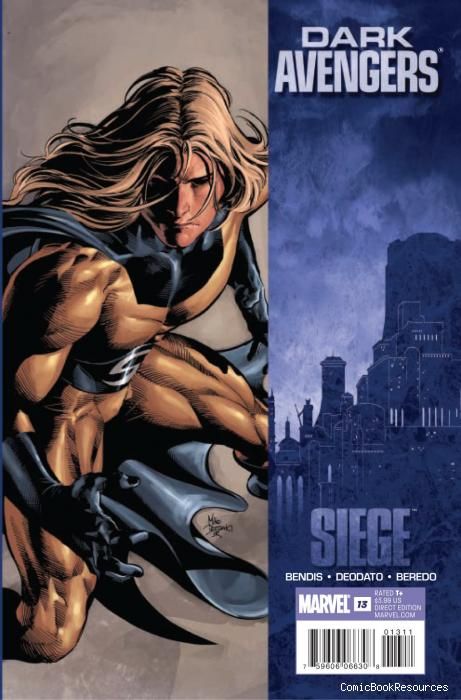The solicitation for this issue reads "After years of mystery, the secrets of the Sentry are revealed! How deep is his madness and who is really in control of him? What is the limit of his power, if any? And what deadly mystery surrounds him causing mortals and gods to tremble in fear?" Now, this text isn't exactly a lie, but it's also not the truth. While the Sentry's past is explored, there are few startling revelations in this issue except for one teased in the preview pages that will, no doubt, divide fans.
Much like the Skrull-centric "Secret Invasion" issues of "New Avengers" and "Mighty Avengers," most of this issue sheds light on what happened after scenes in previous issues of "Dark Avengers," picking up on threads that were simply cut away from in the original comics. This approach isn't always effective, particularly in a case like this issue where almost all of the new information provided is pre-existing. For anyone who has been a reader of Bendis' Avengers work or Paul Jenkins' two Sentry mini-series, little of the Sentry's past that's revealed here is new. It's presented in a different light than before, but it's not new, merely a variation on an origin already known by fans.
However, this issue is effective at summing up the areas of the Sentry's origin that are relevant in "Siege" and for setting up the next issue of "Dark Avengers." As I said, there is one rather large new piece of information regarding the Sentry given near the end of the issue and it's one that will provoke some extreme reactions. It's an odd choice by Bendis, but since it's merely mentioned here, it's difficult to tell how it will play out in future issues and for the Sentry.
Mike Deodato's art in this issue is some of his most malleable and dynamic work on this series yet. In the flashbacks to the Sentry's past, Deodato uses sketchier line work to give the flashbacks a different look than the scenes set now. As the story revolves around the instability of the Sentry, Deodato utilizes layouts that reflect that with lots of skewed and tilted panels placed almost erratically, giving the art a crazed energy. He also focuses a lot on extreme close-ups of characters, honing in on their eyes as cues to their inner thoughts and reactions. He doesn't have the skill yet to completely make that technique work, but it is still effective nonetheless.
Ultimately, Deodato's success can't cover up Bendis' failure to provide strong new insights into the Sentry or his past. The technique of structuring stories so that one or two issues are devoted to filling in the blanks from previous stories is one that Bendis has used several times in the past and it has one big weakness: by the time you reveal the solution to the big mystery, expectations are high and the payoff better be great. It's not here, as most of the time is spent recounting known parts of the Sentry's past and the new revelation is the sort that will make many wonder exactly what Bendis is thinking.

